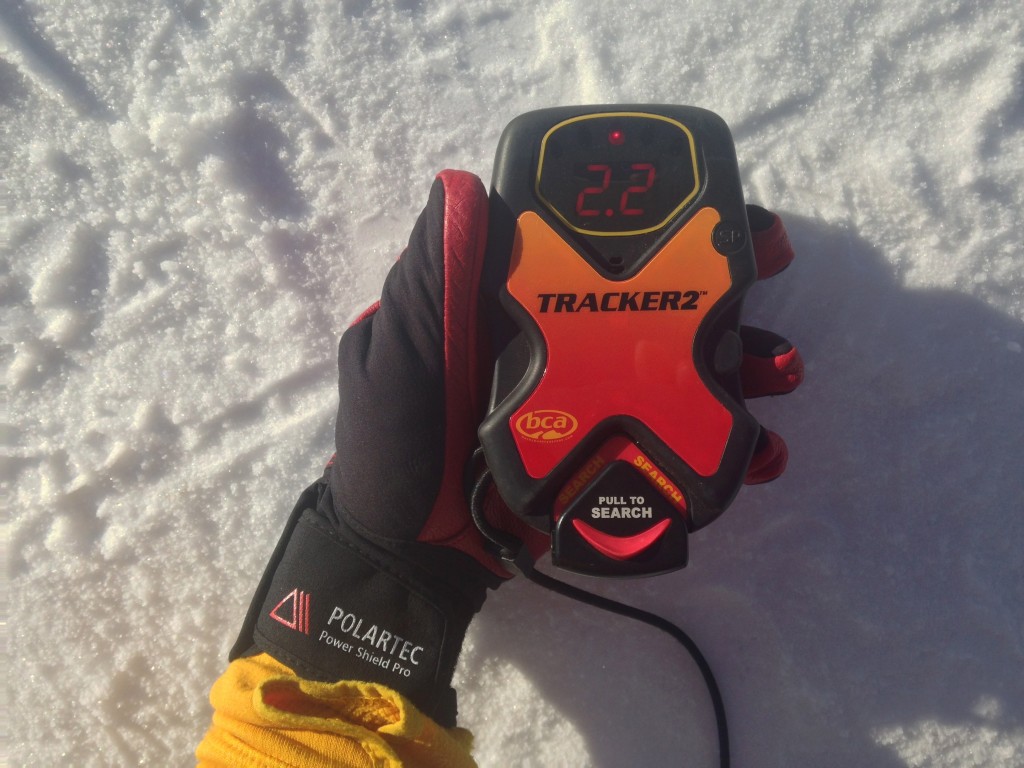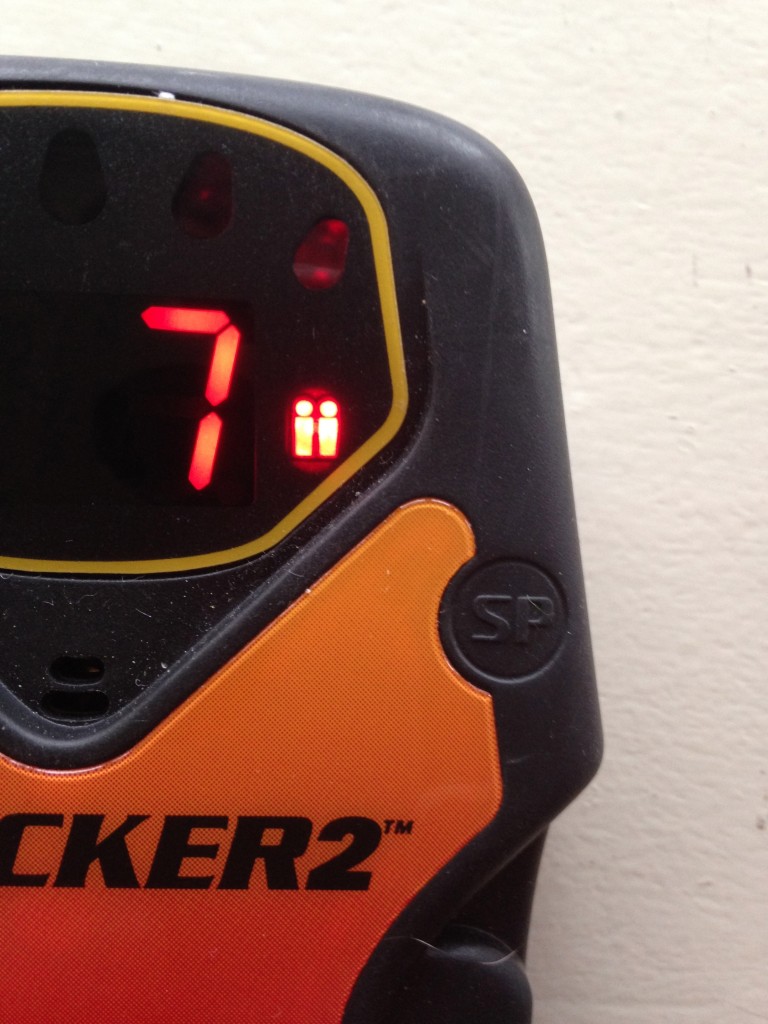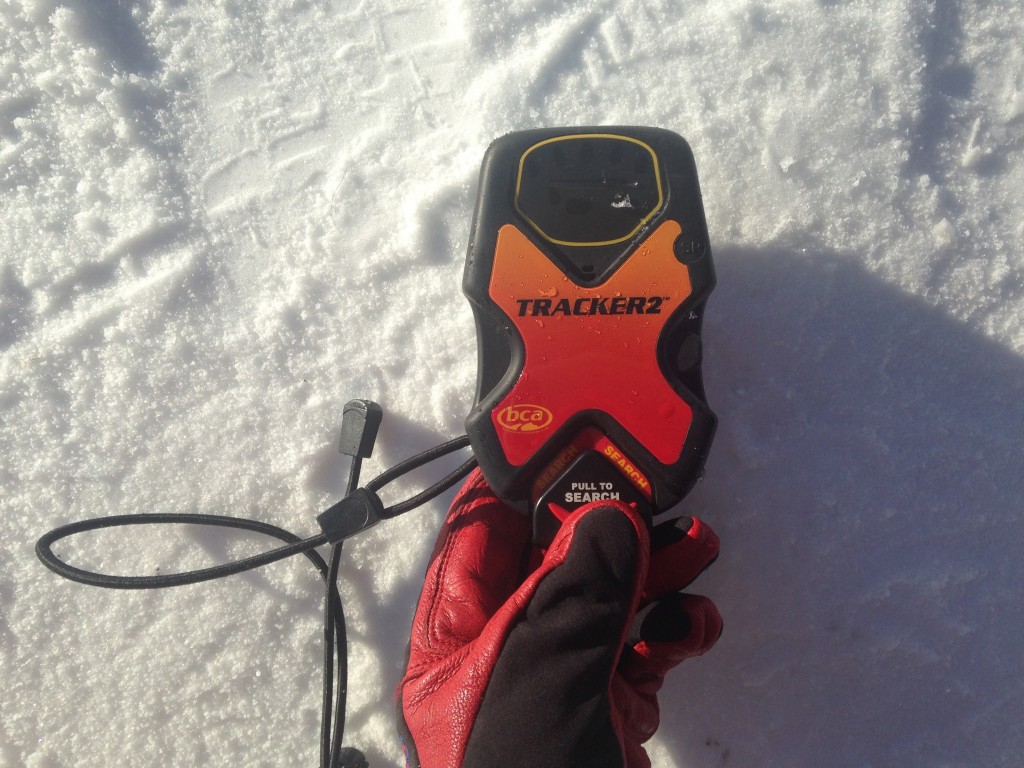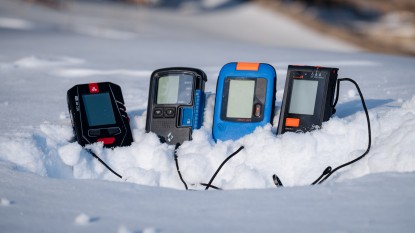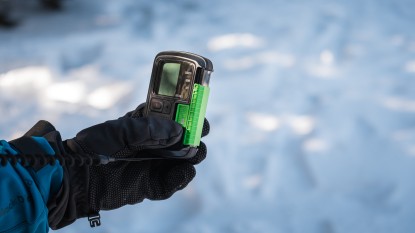Backcountry Access Tracker 2 Review
Our Verdict
Our Analysis and Test Results
The BCA Tracker2 used to be one of best overall performing beacons on the market. While it is slowly getting passed by several similarly priced all-arounder models, it remains a solid beacon. It doesn't have a very easy-to-use multiple burial function, but it is lightning quick and offers outstanding precision at finding a single buried victim, which is obviously by far and away from the most important job of any beacon. While the Tracker2 costs less, the Tracker S is superior in nearly every way, and we think it is easily worth the extra money.
Performance Comparison
Range
During our side-by-side range tests, the BCA Tracker2 had a 40-45 meter range, which was slightly below average among the models we tested. This means it has a 40m wide search strip width, which is what most people use, as that is what AIARE, AAI, and other avalanche educational entities recommend.
While the Tracker2 has a slightly below average maximum range, we sometimes thought people “put down” the Tracker2's range more than it deserved. In fact, it has a slightly better range than the Arva Evo4, Ortovox 3+, and Ortovox Zoom+.
Speed
Even though it was released just over ten years ago, this model's processor speed is fast. Even searchers who weren't as “smooth” can stay on the flux line because the Tracker2 can keep up where other models can't.
Ease of Finding a Single Victim
While range might be a small shortcoming of the Tracker2, the ease of finding a single victim is its strength and where it comes to life. We thought it was one of the easiest and quickest beacons to use, regardless of price.
Its user interface remains one of the most simple available and thus more straightforward in a high-stress environment. There are few buttons or controls, and for searchers with little experience or who may be out of practice, the Tracker2 almost always scored the fastest. Going into search mode couldn't be easier; just pull back on the big tab labeled “Pull to Search.” Once the Tracker2 picks up a signal, it uses five directional arrows to help the user stay on the flux line.
The Tracker2 will also use two arrows simultaneously to further help the users stay on the flux line. This, combined with a faster than average processor, allowed users to move quickly and stay on the flux line and not get bounced around. While other manufacturers have come out with a “simple beacon” similar to the Tracker2, like the Ortovox Zoom+, none are as easy or as fast to use.
Ease of Use in Fine Search
The fine search typically refers to the bracketing portion of the search and the final five meters before bracketing begins. The fine search is where the difference in processing speed becomes the most apparent and was also where the Tracker2 performed as well or better than other products costing more.
We also really liked that it turned off its directional arrows under two meters to help remind the searcher to start bracketing. This is something the older Tracker DTS did not do. The Tracker2 does not have a “turn around” button, so the user does have to pay attention to the numbers and listen to the sounds to figure it out. We didn't think this was a big deal, however, because it is such a good beginner beacon, and that is one feature that some less experienced users might want to have.
Ease of Use in Multiple Burials
Multiple burials are one of the significant drawbacks of this beacon. There is no way to suppress or “Flag” a transmitting beacon to let you search for the next one.
While some people argue as to the level of importance of this feature (because it's far better to find and dig up one victim rather than just “flagging” three), most other three antennae models we tested do have some sort of flagging feature. Instead, the Tracker2 has two things: an indicator light showing that it is picking up multiple signals and an SP or “Special Button”. The special button essentially limits the field of “search vision” from your beacon. Instead of searching all the way around you, it drops the Tracker2's “field of vision” to only 75 degrees of vision. Once the button is pressed, you rotate the beacon 375 degrees in an attempt to get it to “jump signals”, and then you can go on to looking for the next beacon. This works but is difficult to perform effectively and requires a fair amount of practice.
Features
The Tracker2 is a relatively no-frills product, and its lightning-quick processor, along with its simple, easy to use design and lack of controls, are its best features.
The Tracker2 does feature a Revert to Transmit mode, where after five minutes of searching without picking up a signal, it will revert to Send mode. The Tracker2 does make a lot of noise before returning to warn you that it is happening.
Tracker2 versus the Tracker S
Both models are very quick and offer some of the best precision for the bracketing stage of the fine search. Despite the Tracker S being ten years newer in its design, we don't think it is much faster as far as processing speed goes, and both are among the quickest on the market despite both of their below-average-price. The Tracker S is smaller and more comfortable to wear in a zippered pants pocket, and we like the stretchy lanyard of the “S” far better. The Tracker S has a signal suppression function and a big-picture mode where it can see multiple signals simultaneously, something that will help complex burial situations or for Pro level avalanche course and ski guide examinations. While we like the Tracker2, we like the Tracker S more and easily think it is worth the extra money.
The Tracker2 is a good option for any backcountry user, from expert to beginner, because of its speed and ease of use. We think the Tracker2 is an excellent product for newer users or folks who don't practice enough. For guides or group leaders, the Tracker2 is a good option, but not the best. For more advanced users who need or want more out of their beacon than simple search and send functions, we'd recommend other options in our fleet.
Value
All things considered, it performs very well for its price. While it held an award for more than half a decade, it most recently lost it to the BCA Tracker S, which isn't vastly superior to the Tracker2 but is nicer and easily worth the extra money.
Conclusion
Even though this model is more than ten years old, the Tracker2 is still one of the quickest and easiest to use for finding a single beacon, which is what most backcountry users are faced with. The only thing that kept it from scoring higher were its shortcomings in multiple burial situations and its below-average range. We would remind most users not to focus too much on additional features they are unlikely to use. It remains among the fastest models currently on the market, and its precision in the bracketing stage is top-tier. While you can buy a higher-performing beacon, the Tracker2 remains a tried and true option that is solid and dependable.



